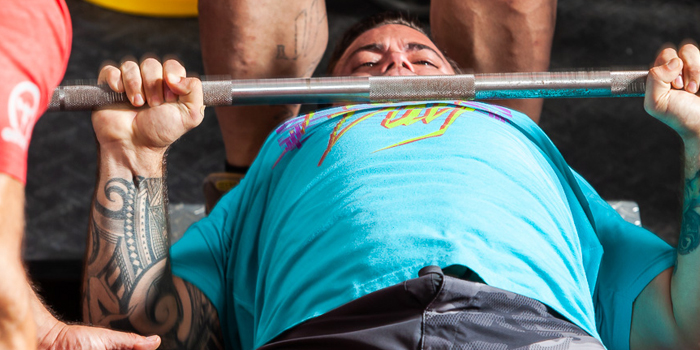
There is no shortage of strategies that have been promoted to bust plateaus and improve your 1RM. People have gotten stronger by employing maximum effort training, dynamic effort training, using bands, chains, boards, isometrics, you name it. However, there is often mixed success with how well certain training modalities work between people. Of course, various intrinsic factors may dictate which methods work best for certain people, but having a better understanding of how these methods may directly contribute to improving your 1RM is important. This knowledge can help coaches and trainees decide when and for whom these various methods are most appropriate.
To better understand how these various training strategies improve 1RMs, I will first outline a typical force-time curve during a maximum lift. Then, I will break down what constitutes a successful vs. unsuccessful lift using the force-time curve. After this foundation and the general principles have been outlined, I'll elucidate the nuances of how various training modalities influence one’s force-time curve and contribute to increasing your 1RM. Finally, I’ll provide some practical applications to consider for your own or your athletes’ training.
Typical Force-Time Profile During a Maximum Lift
Fortunately, as fancy as the force-time profile may sound, it’s actually quite a simple curve. A typical example during the lifting (i.e., concentric) portion of a maximum-effort bench press or squat will look something like this (1,2,5):
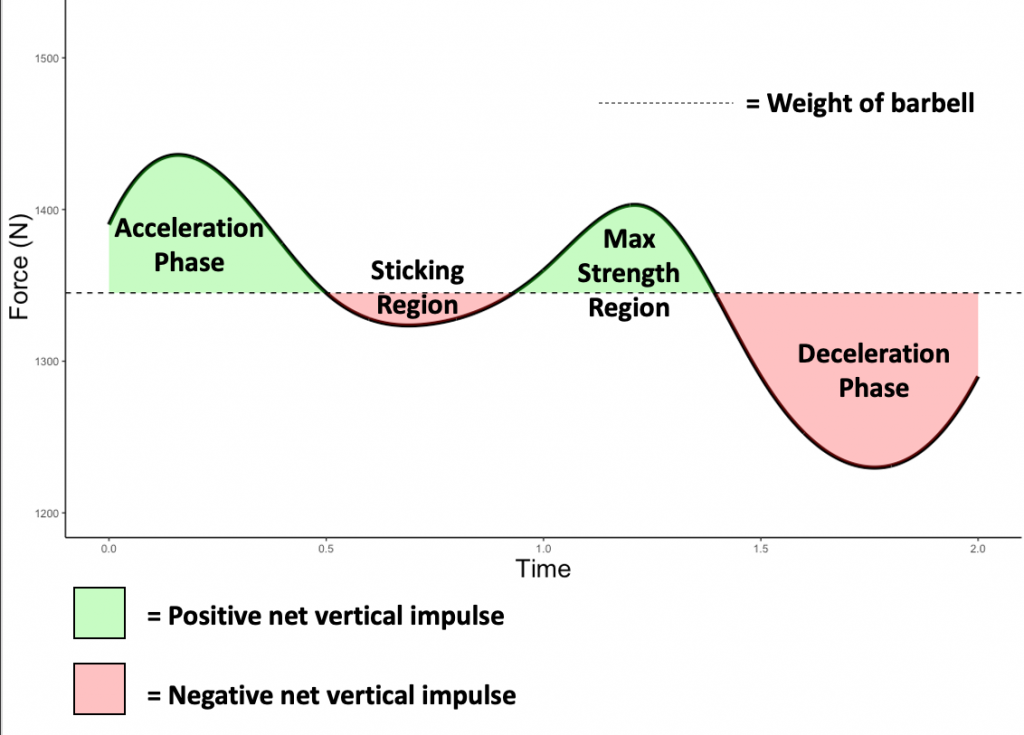
The dashed horizontal line represents the weight of the barbell (its mass multiplied by the acceleration of gravity). The solid line represents someone’s typical force production onto the barbell during a maximum effort attempt.
As we can see, there are points where the force production is less than the weight of the barbell. Adopting the terminology from Elliot et al. (1), this represents the “sticking region” during the 1RM (which anyone who has attempted a 1RM will be very familiar with), which occurs after the initial “acceleration phase.” The other two regions are named the “max strength region” (usually the point where the lifter has the largest mechanical advantage) and the “deceleration phase” (the point where the barbell returns to 0 velocity at the top of the lift).
RELATED: Grinding Your Way to Victory and New PRs
Note that this shape can change slightly depending on whether a stretch-shortening cycle is employed (e.g., a deadlift may look slightly different). Therefore, the generalizations made moving forward are best suited to lifts such as a squat and bench press. There is a more obvious eccentric phase followed by a concentric phase of the lift versus a deadlift where arguably the concentric phase is followed by the eccentric phase.
What Constitutes a Successful Versus an Unsuccessful Lift?
I know bringing up curves can be quite boring but bear with me because this force-time curve is crucial for understanding what will actually constitute a successful vs. an unsuccessful lift. There’s really just one simple thing that determines whether the lift will “break-through” the sticking region: the area underneath the first “hump” (acceleration phase) must be larger than the area underneath the second “hump” (sticking region):
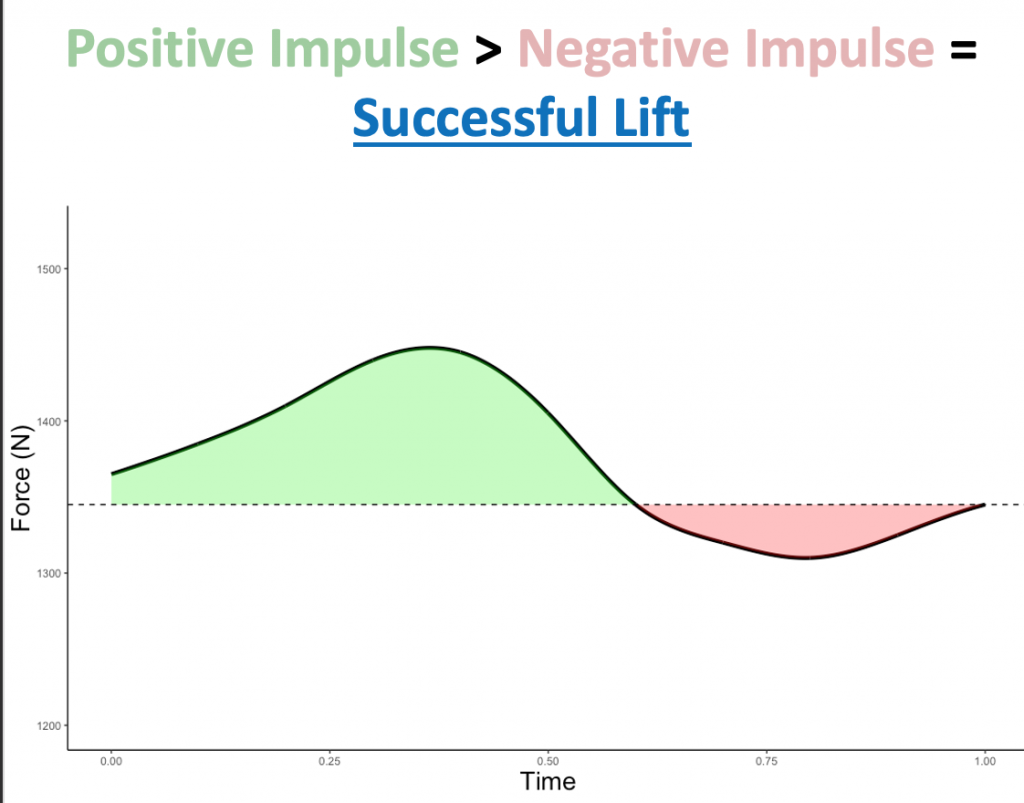
Again, this is more specific to lifts such as a squat or bench press where a concentric phase follows a defined eccentric phase. The area underneath the curve represents the impulse that one can generate. If the green shaded area (“positive” impulse) during the initial push is larger than the reg shaded area (“negative” impulse) in the sticking region, the lifter will overcome this temporary portion of the lift where the force applied to the bar is less than the force of gravity. That’s all there is to it.
Even if you fail a lift right at the bottom, it is because the initial impulse was just much smaller than what would be required to get the bar to your “usual” sticking region. For most lifters, if you get through your sticking region, wherever it may be for you, the lift will be successful (this isn’t always the case (6), but more often than not, this is the critical part of the bench press that people will fail). If the shaded area during the sticking region is larger, the lifter will for sure fail the repetition:
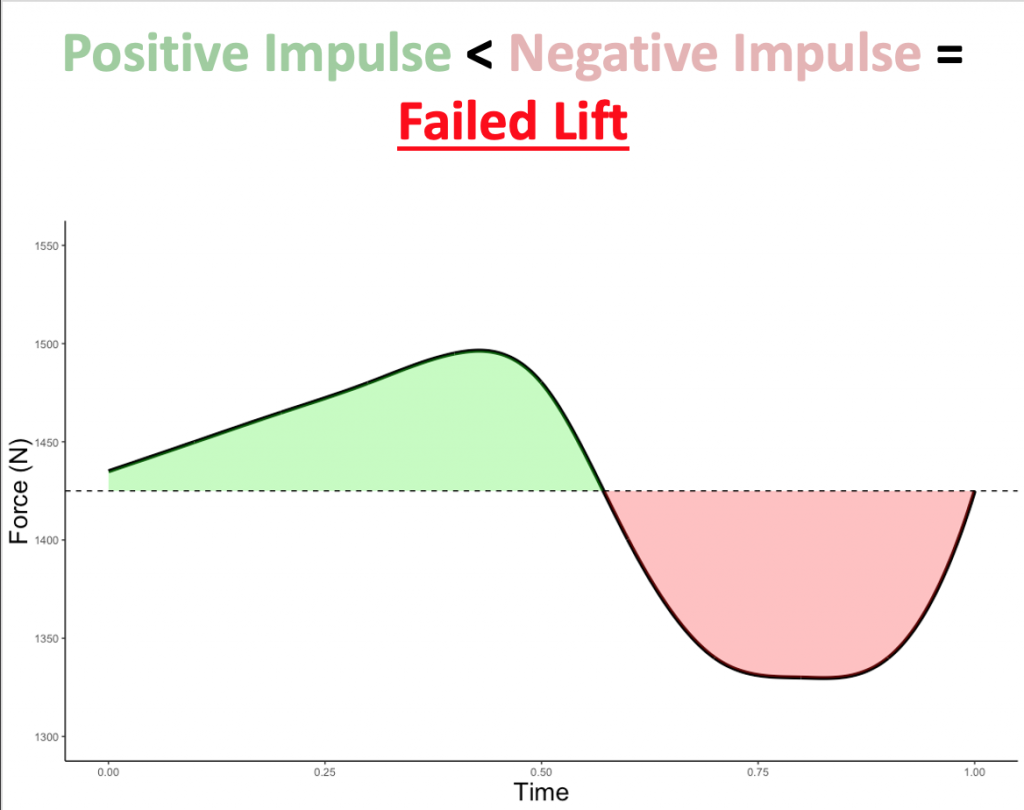
It’s honestly that simple. Of course, various technical factors may influence how one applies force to the bar, but it all boils down to simple physics.
Examples of how Various Modalities Improve 1RM
Now that we’re done with this quick physics intro, we can discuss how various training modalities may improve 1RM. Remember, the goal is to ensure that the area of the first green region is maximized and the area of the red region minimized. Therefore, for a modality to be effective, it must influence one of these two regions. Different methods will influence the relative size between the green and red areas in different ways. The four examples that I will outline for this article will be:
- Increasing peak force using the maximum effort method,
- Increasing rate of force development with the dynamic effort method
- Extending the acceleration phase with accommodating resistance or pneumatics
- Getting stronger in the sticking region with isometrics.
1. Increasing the peak force produced during the initial acceleration phase with the Maximum Effort (ME) Method
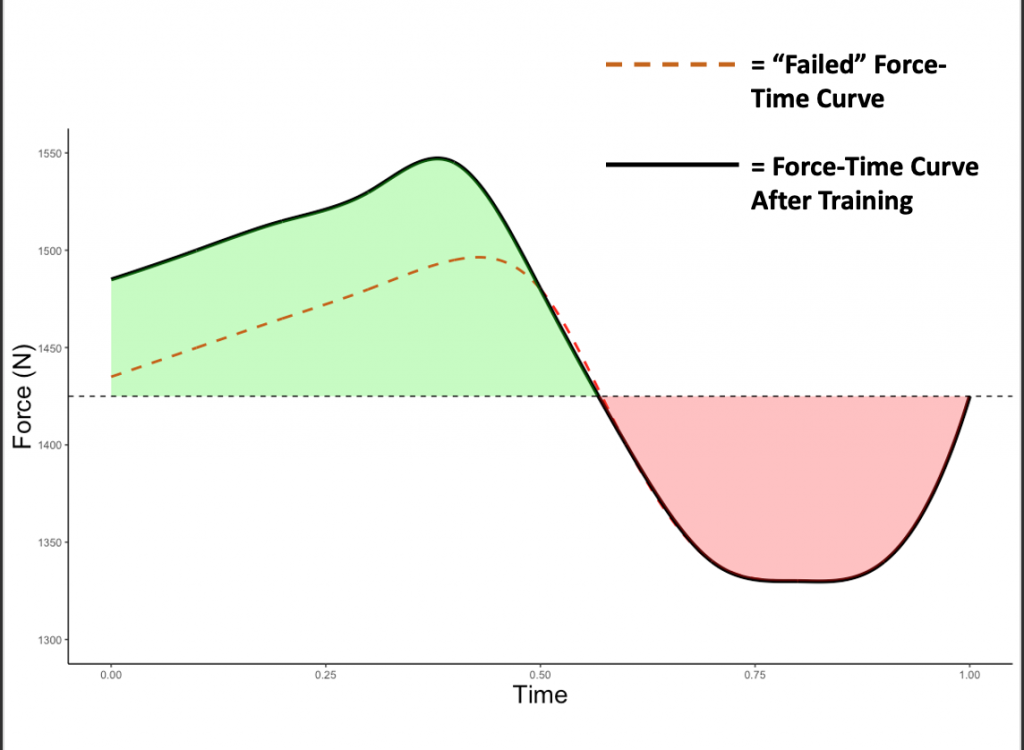
By utilizing the maximum effort method, one can increase their peak force generation during the acceleration phase. This will increase the initial impulse so that the shaded green area becomes larger than the shaded red area. As highlighted previously, this will allow the lifter to break through the sticking region and complete the lift.
2. Increase the rate of force development during the initial acceleration phase using the Dynamic Effort (DE) Method
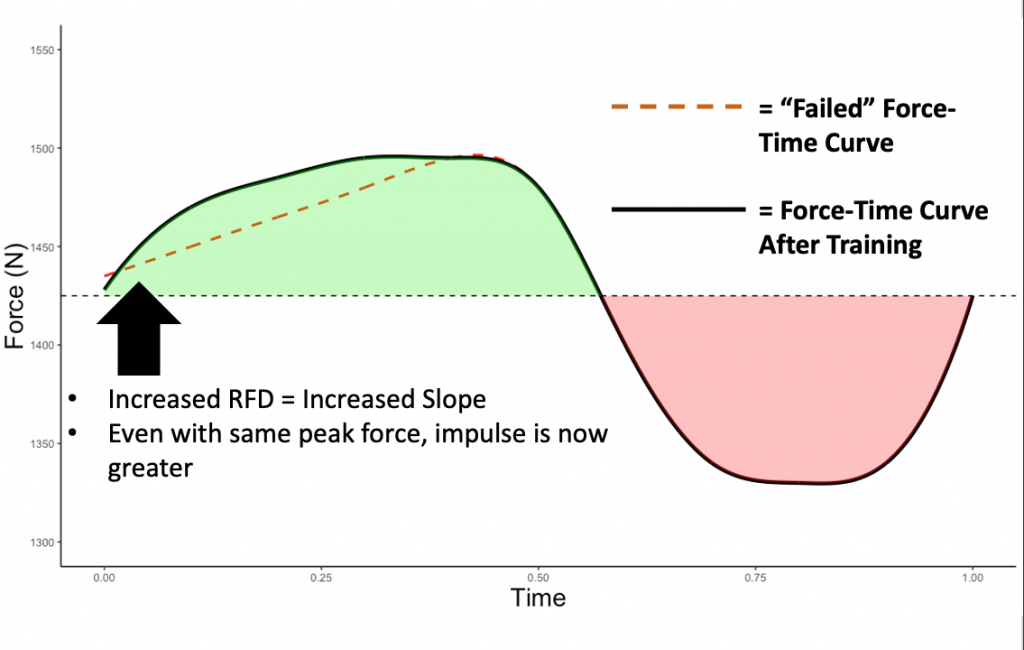
Again, this training method increases the initial impulse generation, but with “speed work,” the impulse gets larger because the athlete can now attain their peak force quicker. In other words, a larger rate of force development means that you have more momentum going into the sticking region even if your peak force has not become any larger. Although your “peak strength” may not always be greater following dynamic effort training, it can still help to improve your 1RM capabilities. As we can see from the force-time curves, larger peak forces may help improve 1RM performance, but it isn’t the sole determinant of how much you can lift.
3. Extend the duration of the acceleration phase using accommodating resistance or pneumatics
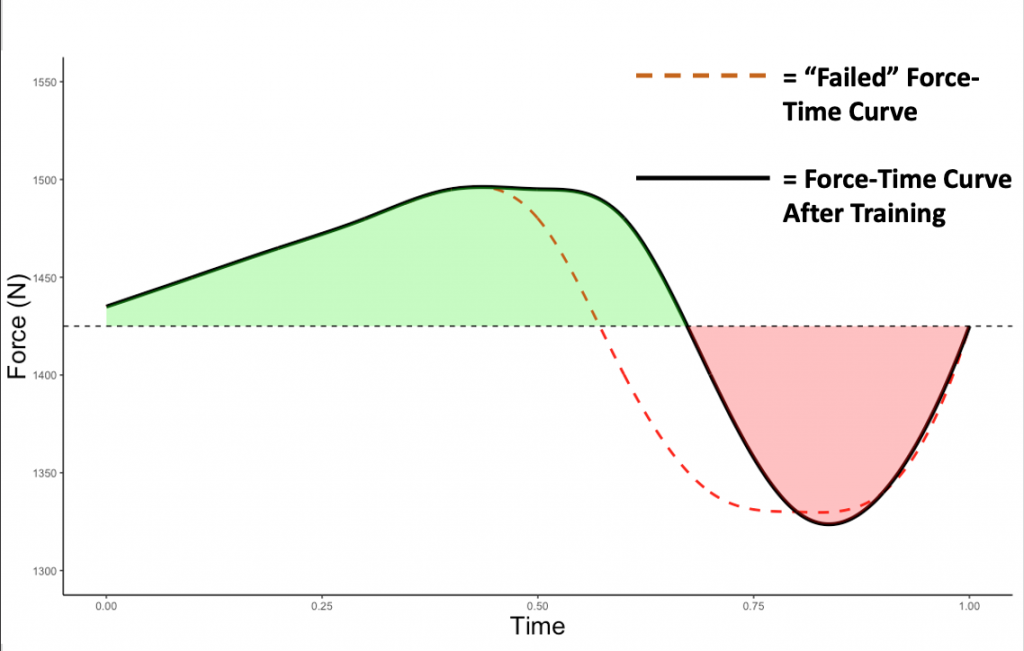
The initial impulse is getting larger with this modality, but how it’s getting larger is different. When using accommodating resistance or pneumatics, it gets larger due to the lengthened acceleration phase. Accommodating resistance with chains provides increased mass to the barbell as the chains lift from the ground. Therefore, as the barbell gets heavier towards the top, the lifter can actively accelerate for the entire portion of the repetition and not slow themselves down. Using bands is slightly different as they provide a method of adding resistance without increasing the mass of the barbell. This is an important distinction because if no more mass is added to the barbell, it won’t have as much momentum (3).
Pneumatics are similar to bands in that they add resistance to the bar using air pressure (an example is the machines made by Keiser), thus changing the inertial properties of the barbell as it is “mass free.” However, pneumatics provide the only true (near) constant level of external resistance (4). Because mass must be decelerated to return the barbell to zero velocity at the end of the lift, mass-free resistances (or at least reducing the mass with bands and pneumatics) allow the lifter to extend the acceleration phase of their lift without requiring any (or as much) active deceleration (4). In other words, using these forms of resistance will build coordination strategies that result in a longer acceleration phase.
4. Getting stronger in the “sticking region” using isometrics
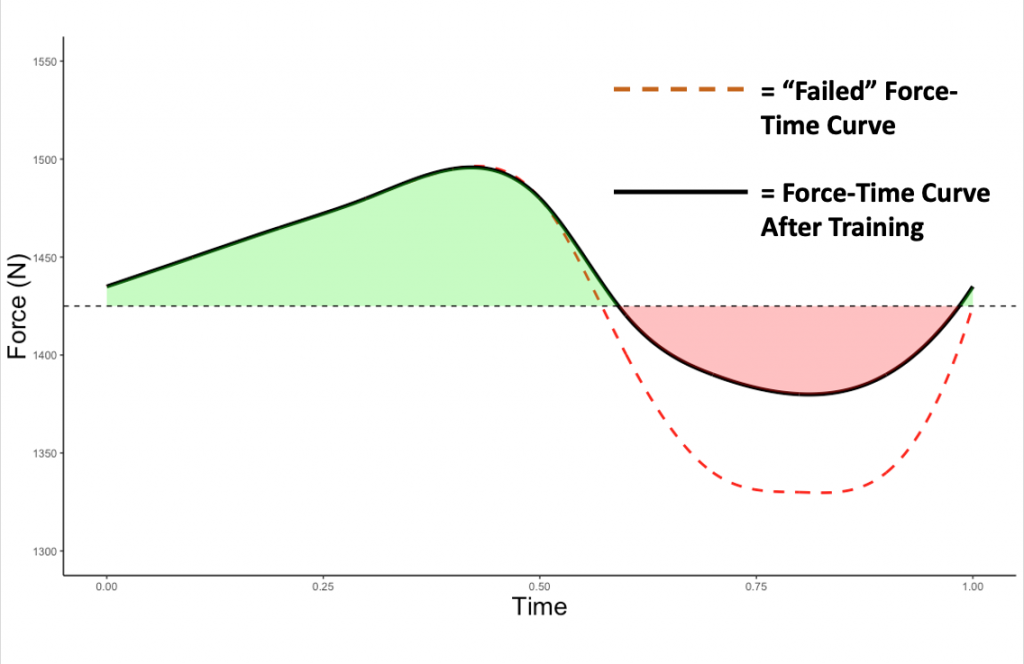
Isometrics have become much more popular recently to improve specific regions of a lift. As we can see from the force-time curve, this could help improve 1RMs by reducing the red shaded area rather than necessarily making the green shaded area larger (although isometrics could also be used in the bottom portions of the lift to improve one’s peak force here as well). Like most other methods outlined so far, isometrics in the sticking region provides a way of improving 1RM without necessarily just increasing the peak force that you can generate.
Summary and Practical Applications
There are four main phases of the force-time curve during a maximum effort lift. The success of a 1RM attempt is dependent on the relative sizes of mainly the first two phases, the acceleration phase and the sticking region. Depending on the method you employ in your training, you can influence the relative sizes of these phases (i.e., the shapes of the curves) in different ways to improve your 1RM. This means that you don’t necessarily need to improve your maximum force capabilities to improve your 1RMs.
How you apply force to a barbell is just as, if not more, important than the peak force you can apply. The ways you can improve your 1RM are not limited by the four methods I presented here. The same underlying principles of the force-time curve, its relationship to 1RM, and how each method can influence specific portions of the curve can guide the selection of any modality or exercise (e.g. board presses, pause squats, etc.) to improve powerlifting performance. Furthermore, it can guide for whom certain modalities may be more effective (e.g., someone with a lot of experience using bands may not get the same benefits if now training with pneumatics since the duration of their acceleration phase likely isn’t what is “holding back” their 1RM).
As a typical rule-of-thumb, if you’ve never prioritized a certain modality in your previous training, you’ve likely made improvements to only a narrow part of your force-time curve. For example, if you’re a raw lifter who’s never done speed work with bands, implementing this strategy during your training will likely translate to an improved 1RM. This is not to say you should run out today and start box squatting with bands like the guys at Westside Barbell if you can hardly squat in the first place. Rather, it’s something to keep in the back of your mind when your lifts inevitably start stalling.
Perhaps rather than pounding away at trying only to add more weight to the bar or put on more muscle mass in an attempt to improve your peak force output, consider improving your rate of force development or increasing the duration of your acceleration phase of a bench press to improve your 1RM. There are much more nuanced ways of determining if and when to use specific training modalities (as well as how to implement them, such as in this article here) that are beyond the scope of this article. Perhaps I will write more specifically about some of them in the future.
References
- Elliot, B, Wilson, G, and Kerr, G. A biomechanical analysis of the sticking region in the bench press. Med Sci Sport Exerc 21, 1989.
- Escamilla, RF, Fleisig, GS, Lowry, TM, Barrentine, SW, and Andrews, JR. A three-dimensional biomechanical analysis of the squat during varying stance widths. Med Sci Sports Exerc 33: 984–98, 2001.Available from: http://www.ncbi.nlm.nih.gov/pubmed/11404665
- Frost, DM, Cronin, J, and Newton, RU. A biomechanical evaluation of resistance: Fundamental concepts for training and sports performance. Sport Med 40: 303–326, 2010.
- Frost, DM, Cronin, JB, and Newton, RU. A comparison of the kinematics, kinetics and muscle activity between pneumatic and free weight resistance. Eur J Appl Physiol 104: 937–56, 2008.Available from: http://www.ncbi.nlm.nih.gov/pubmed/18830619
- Kompf, J and Arandjelović, O. Understanding and Overcoming the Sticking Point in Resistance Exercise. Sport Med 46: 751–762, 2016.Available from: http://link.springer.com/10.1007/s40279-015-0460-2
- VAN DEN TILLAAR, R and ETTEMA, G. A Comparison of Successful and Unsuccessful Attempts in Maximal Bench Pressing. Med Sci Sport Exerc 41: 2056–2063, 2009.Available from: http://journals.lww.com/00005768-200911000-00013
Steven Hirsch, MSc, CSCS, is a PhD student at the University of Toronto. In addition to his studies and work as a strength and conditioning coach, Steven has competed in Olympic weightlifting and powerlifting. Steven created MVMT SCI as an online platform for disseminating human movement science for researchers and practitioners.










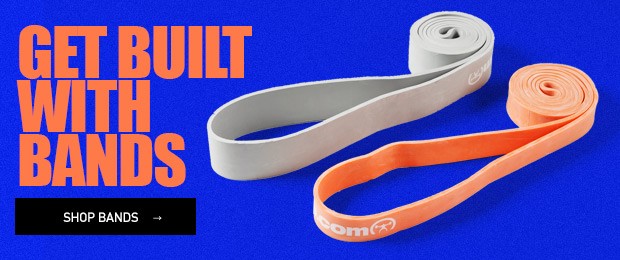
2 Comments